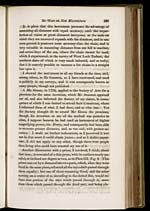James Watt (1736-1819)
Account of micrometers for measuring distances
Mr Watt on New Micrometers.
123
It is plain that this instrument possesses the advantage of
measuring all distances with equal accuracy, until the imper-
fection of vision at great distances interposes, as the scale on
which they are measured expands with the distances, and in un-
even ground it possesses more accuracy than the chain, and is
very valuable in measuring distances from one hill to another,
and across bays of the sea, where the chain cannot be used,
which I experienced, in the survey of West Loch Tarbert, the
northern shore of which is very much indented, and so rocky,
that it is scarcely possible to measure a few chains in a straight
line upon it.
I showed the instrument to all my friends at the time, and,
among others, to Mr Smeaton, as I have mentioned, and used
it publicly in my surveys, and it was consequently known to
many people, though not published.
A Mr Green, in 1778, applied to the Society of Arts for a
premium for the same invention, which Mr Smeaton apprized
me of, and also informed the Society of my claims, in conse-
quence of which I was desired to attend their Committee, where
I informed them of what I had done, and at what time. Yet
the Society thought fit to award Mr Green the premium,
though his invention or use of the method was posterior to
mine, I suppose because he had used an instrument of higher
magnifying power, viz. Forty, and consequently had been able
to measure greater distances, and, as was said, with greater ac-
curacy. I made no further reclamation, as I perceived it was
not in that court I could obtain justice; and as I dislike paper-
war, I did not apply to any other, though there were people
then living who could have attested my use of it.
Another Micrometer with a prism, I invented, I think, about
that time; it consisted of a thin prism, with its surfaces nearly pa-
rallel, or inclined one degree or two, as in Plate III. Fig. 9. This
prism was cut by a diamond into two parts, which, when they were
fixed in the same plane, refracted all the rays which passed through
them equally; but one of them remaining fixed, and the other
moving on a centre at a, according to the dotted line, would re-
fract that portion of the rays which passed through it, more
than those which passed through the fixed part, and being pla-


